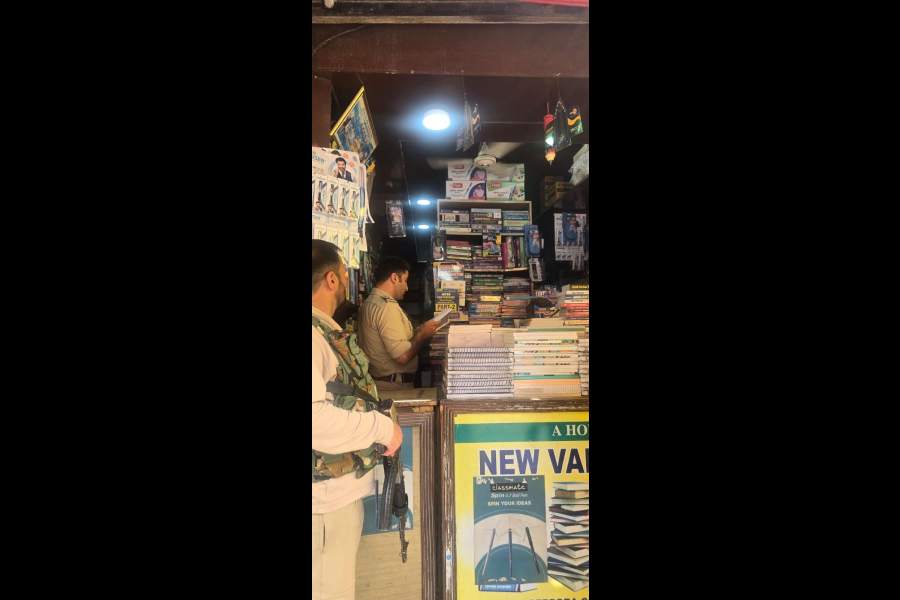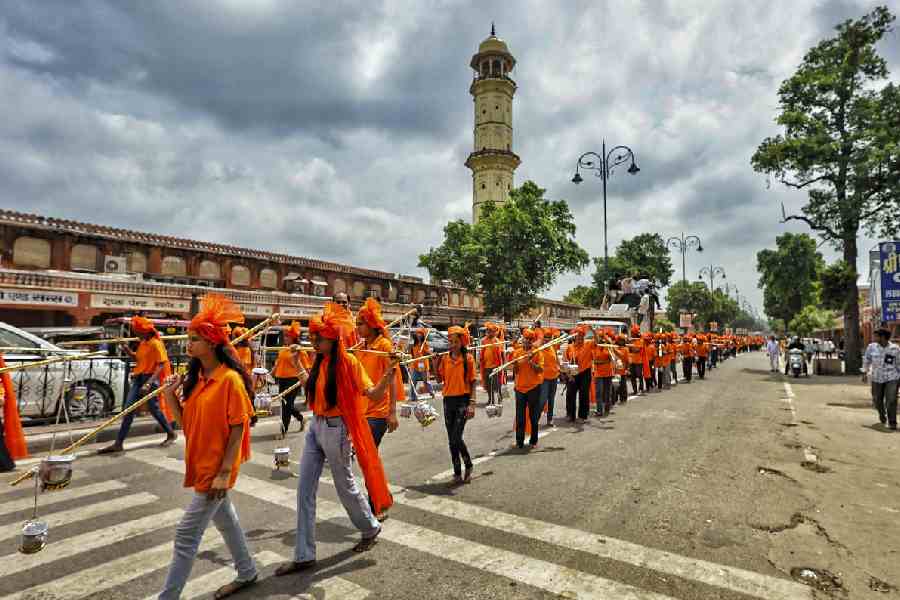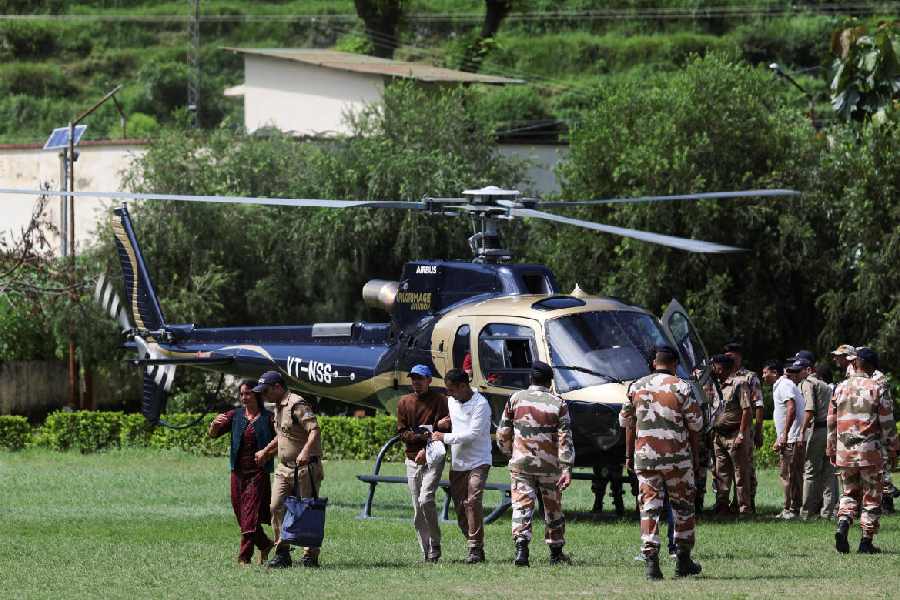 |
| A rescue worker moves a piece of the wreckage as residents join the search at the plane crash site, a few kilometres from the Benazir Bhutto International Airport in Islamabad, on Friday. (AFP) |
Islamabad, April 20: A Pakistani passenger jet with 127 people on board crashed into muddy wheat fields near Islamabad airport as it was trying to land in a violent thunderstorm today, leaving little chance of survivors.
The Boeing 737-200, coming in from Karachi on its first evening flight after a break in domestic carrier Bhoja Air’s operations, was totally destroyed in the crash some 5km from Benazir Bhutto International Airport, officials said.
Late at night, the Pakistan government said there appeared to be no survivors in the crash, the second major one in Islamabad in less than two years.
“Chances of survival are very slim as the aircraft has been destroyed completely,” Islamabad police chief Bani Amin told The Telegraph.
Pakistan army troops, navy officers and the elite police force used flashlights to search for signs of life among the smouldering wreckage and strewn body parts, spread over a wide area near the airport. The debris missed residential areas.
Amin said nobody on the ground appeared to have been killed “but apparently all on board perished”. Mangled human limbs hung from bushes and bodies were burnt beyond recognition, he said.
Sobbing relatives of those aboard Flight B4-213 thronged Bhoja Air’s counters at Karachi and Islamabad airports. The carrier, which has only four planes, resumed operations last month after they were suspended in 2001 because of financial problems.
Bhoja administrative director Javed Ishaq said in Karachi airport that the jet was brought down by heavy winds. “The aircraft was in good shape. This came from God.” As he spoke, relatives of passengers booed him and demanded to be flown to Islamabad to collect the bodies.
“My brother’s wife was on board this flight,” said Naveed Khan in Karachi airport. “We pray for the departed souls, what else can we do now?”
The plane had been given clearance to land, an air traffic controller said on condition of anonymity. Heavy rain and violent winds were buffetting the capital at the time of the 6.40pm crash.
“It was really bad weather for a flight,” said navy captain Arshad Mahmood. “The pilot was forced to move down to avoid clouds that were generating lightning and thunder.”
Several farmers threshing wheat in the fields said they saw the aircraft burst into flames when it hit the ground. “The flames leapt up like they were touching the sky,” said Mohammad Zubair.
Television footage showed the wreckage of the plane, including parts of what looked like its engine and wing, up against the wall of a small building.
A government investigation blamed the pilot for veering off course in stormy weather. The impact of the crash was devastating, scorching a wide swath of the hillside and scattering wreckage over a half-mile stretch.
The last major crash was in July 2010 when an Airbus A321 operated by Airblue crashed into the hills overlooking Islamabad, killing all 152 people on board.










